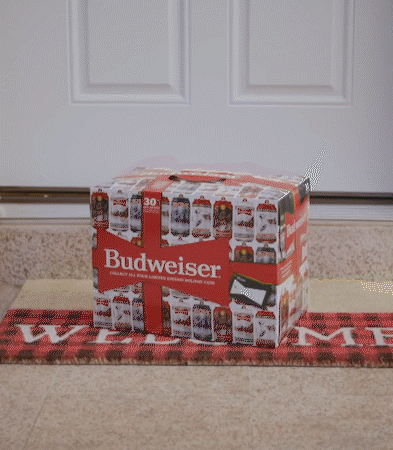
As grating as the term “content is king” may be, one thing is for sure: It’s the only monarch effectively fostering goodwill and growing in popularity. Currently, 84% of B2C content marketers call their content marketing programs successful, with about 60% expecting to increase their content budgets this year in efforts to drive brand awareness, educate consumers and build credibility.
Good content marketing builds brand identity and consistency; successful content marketing engages the consumer, nurturing loyalty. Building goodwill this way is effective, with 70% of consumers saying that customized content shows that organizations want to forge genuine connections with them. Those connections bring more than just warm fuzzies, showing that a loyal customer is worth 10 times the dollar value of their first purchase.
One of the ways brands can engage directly and personalize touchpoints effectively across platforms is with modular content. A modular approach breaks away from one-at-a-time asset creation providing a flexible, scalable — and testable — way to stretch content across channels to meet more customers.
How Modular Content Maximizes Creative Assets
Modular content is remixable, like a set of Legos. You can create one large asset from many blocks, or you can pull out sections and individual pieces to reconfigure into entirely different scenarios. Along with being endlessly configurable, it’s also easily tested and refined.
However, just like Legos, your modular content components need a sturdy foundation if you plan to build them out. For example, let’s say you do a 30-second spot with dialogue, but you didn’t think about modularization during the planning stages. When the spot is complete, it will be impossible to slice up into multiple usable pieces for different channels, since each piece is context-dependent on the larger narrative.
If you had planned ahead, you could have worked in sections specifically intended to stand on their own. That way, the segments at seconds 9–14 or seconds 22–27 (or any given section) could be plucked out for double-duty elsewhere. And the order of “content units” in such a video doesn’t have to be A–Z. It can be F+B+Y or nearly any variation that makes sense within the context of the whole story.
“Creating modular content is not simply an executional afterthought where we try to capture as much as possible from a production standpoint,” says Michelle Moscone, Head of Creative Operations at WITHIN, “but really the basis of our ideation process. The team really challenges itself creatively to ideate around visual vignettes and other aspects of the shoot to extrapolate as many scenarios as possible from the same set of variables.”
Consider this 30-second spot created by WITHIN for Anheuser-Busch.
The two paid social ads, below, were created from the same video shoot session as the full-length TV commercial.


Plan Your Storytelling in Advance
When producing your own modular content, think about building in “content units.” Pay close attention to how you tell a story and make sure the concept lends itself to modularization. If it doesn’t, look for moments that can function as standalone elements.
Below, a still from the same shoot functions as a banner on an e-commerce partner’s site.

To illustrate with another familiar scenario, let’s say you have two ads that look almost identical, but the text varies. In that case, you’re isolating copy as the testable variable, and you take the highest-performing version of the ad into the next iteration. Then you’d isolate and test another variable, like the image, animation, logo placement, and so on.
Modular content takes a step beyond just a visual variation or different text designed for a single campaign: it can mean using multiple actors for the same part in a video, for example. The video team can shoot each actor in a number of settings to test backgrounds, with ample variations in detail and imagery.
For a two-person spot, consider having three actors read both parts through, in three different settings. This approach allows you to test, build, and make adjustments. Which actors drive clicks in which role? Which background drives the most engagement? You can isolate and test each element to see what resonates best with each audience, then continue to iterate and refine. The same goes for testing backgrounds for product shots. You can take static assets and test different types of animation and remixes, then mix, test, and match to audience preference.
With a little extra planning, modular content can help you not only stretch precious marketing dollars, but also distill cross-platform content creation into one project. By considering all of your assets as a series of content units rather than a singular, insular production, you can consistently engage more consumers, more effectively, ultimately increasing your marketing ROI.
Once your assets are ready to go, it’s important to get attribution right, so all that hard work ends up working for you. If you want to make smart decisions to optimize content and channel strategy, let’s talk.
Sue Cahaly is WITHIN’s Content Marketing Manager. She and her husband live outside of Boston in a house full of kids, dogs and music.
Get industry insights and news directly to your inbox.
Thank you. Check your email for details on your request.
| Cookie | Duration | Description |
|---|---|---|
| __hssrc | session | This cookie is set by Hubspot whenever it changes the session cookie. The __hssrc cookie set to 1 indicates that the user has restarted the browser, and if the cookie does not exist, it is assumed to be a new session. |
| checkForPermission | 10 minutes | This cookie is set by Beeswax to determine whether the user has accepted the cookie consent box. |
| cookielawinfo-checkbox-advertisement | 1 year | Set by the GDPR Cookie Consent plugin, this cookie is used to record the user consent for the cookies in the "Advertisement" category . |
| cookielawinfo-checkbox-analytics | 11 months | This cookie is set by GDPR Cookie Consent plugin. The cookie is used to store the user consent for the cookies in the category "Analytics". |
| cookielawinfo-checkbox-functional | 11 months | The cookie is set by GDPR cookie consent to record the user consent for the cookies in the category "Functional". |
| cookielawinfo-checkbox-necessary | 11 months | This cookie is set by GDPR Cookie Consent plugin. The cookies is used to store the user consent for the cookies in the category "Necessary". |
| cookielawinfo-checkbox-others | 11 months | This cookie is set by GDPR Cookie Consent plugin. The cookie is used to store the user consent for the cookies in the category "Other. |
| cookielawinfo-checkbox-performance | 11 months | This cookie is set by GDPR Cookie Consent plugin. The cookie is used to store the user consent for the cookies in the category "Performance". |
| CookieLawInfoConsent | 1 year | Records the default button state of the corresponding category & the status of CCPA. It works only in coordination with the primary cookie. |
| elementor | never | This cookie is used by the website's WordPress theme. It allows the website owner to implement or change the website's content in real-time. |
| JSESSIONID | session | The JSESSIONID cookie is used by New Relic to store a session identifier so that New Relic can monitor session counts for an application. |
| viewed_cookie_policy | 11 months | The cookie is set by the GDPR Cookie Consent plugin and is used to store whether or not user has consented to the use of cookies. It does not store any personal data. |
| Cookie | Duration | Description |
|---|---|---|
| __cf_bm | 30 minutes | This cookie, set by Cloudflare, is used to support Cloudflare Bot Management. |
| __hssc | 30 minutes | HubSpot sets this cookie to keep track of sessions and to determine if HubSpot should increment the session number and timestamps in the __hstc cookie. |
| bcookie | 2 years | LinkedIn sets this cookie from LinkedIn share buttons and ad tags to recognize browser ID. |
| bscookie | 2 years | LinkedIn sets this cookie to store performed actions on the website. |
| lang | session | LinkedIn sets this cookie to remember a user's language setting. |
| lidc | 1 day | LinkedIn sets the lidc cookie to facilitate data center selection. |
| UserMatchHistory | 1 month | LinkedIn sets this cookie for LinkedIn Ads ID syncing. |
| Cookie | Duration | Description |
|---|---|---|
| _uetsid | 1 day | Bing Ads sets this cookie to engage with a user that has previously visited the website. |
| _uetvid | 1 year 24 days | Bing Ads sets this cookie to engage with a user that has previously visited the website. |
| Cookie | Duration | Description |
|---|---|---|
| __hstc | 1 year 24 days | This is the main cookie set by Hubspot, for tracking visitors. It contains the domain, initial timestamp (first visit), last timestamp (last visit), current timestamp (this visit), and session number (increments for each subsequent session). |
| __lotl | 5 months 27 days | This cookie is set by Lucky Orange to identify the traffic source URL of the visitor's orginal referrer, if any. |
| _ga | 2 years | The _ga cookie, installed by Google Analytics, calculates visitor, session and campaign data and also keeps track of site usage for the site's analytics report. The cookie stores information anonymously and assigns a randomly generated number to recognize unique visitors. |
| _gcl_au | 3 months | Provided by Google Tag Manager to experiment advertisement efficiency of websites using their services. |
| _gd_session | 4 hours | This cookie is used for collecting information on users visit to the website. It collects data such as total number of visits, average time spent on the website and the pages loaded. |
| _gd_svisitor | 2 years | This cookie is set by the Google Analytics. This cookie is used for tracking the signup commissions via affiliate program. |
| _gd_visitor | 2 years | This cookie is used for collecting information on the users visit such as number of visits, average time spent on the website and the pages loaded for displaying targeted ads. |
| _gid | 1 day | Installed by Google Analytics, _gid cookie stores information on how visitors use a website, while also creating an analytics report of the website's performance. Some of the data that are collected include the number of visitors, their source, and the pages they visit anonymously. |
| _hjAbsoluteSessionInProgress | 30 minutes | Hotjar sets this cookie to detect the first pageview session of a user. This is a True/False flag set by the cookie. |
| _hjFirstSeen | 30 minutes | Hotjar sets this cookie to identify a new user’s first session. It stores a true/false value, indicating whether it was the first time Hotjar saw this user. |
| _hjIncludedInPageviewSample | 2 minutes | Hotjar sets this cookie to know whether a user is included in the data sampling defined by the site's pageview limit. |
| _lo_uid | 2 years | This cookie is set by Lucky Orange as a unique identifier for the visitor. |
| _lo_v | 1 year | This cookie is set by Lucky Orange to show the total number of visitor's visits. |
| _lorid | 10 minutes | This cookie is set by Lucky Orange to identify the ID of the visitors current recording. |
| hubspotutk | 1 year 24 days | HubSpot sets this cookie to keep track of the visitors to the website. This cookie is passed to HubSpot on form submission and used when deduplicating contacts. |
| IR_gbd | session | Impact Radius sets this cookie to store a unique ID which is used to identify the user's device, when they return to the websites that used the same network. |
| Cookie | Duration | Description |
|---|---|---|
| __qca | 1 year 26 days | The __qca cookie is associated with Quantcast. This anonymous data helps us to better understand users' needs and customize the website accordingly. |
| _fbp | 3 months | This cookie is set by Facebook to display advertisements when either on Facebook or on a digital platform powered by Facebook advertising, after visiting the website. |
| _mkto_trk | 2 years | This cookie, provided by Marketo, has information (such as a unique user ID) that is used to track the user's site usage. The cookies set by Marketo are readable only by Marketo. |
| B | 1 year | This Cookie is used by Yahoo to anonymously store data related to user's visits, such as the number of visits, average time spent on the website and what pages have been loaded. This data helps to customize website content to enhance user experience. |
| bito | 1 year 1 month | This cookie is set by Beeswax for advertisement purposes. |
| bitoIsSecure | 1 year 1 month | Beeswax sets this cookie for targeting and advertising. The cookie is used to serve the user with relevant advertisements based on real time bidding. |
| fr | 3 months | Facebook sets this cookie to show relevant advertisements to users by tracking user behaviour across the web, on sites that have Facebook pixel or Facebook social plugin. |
| mc | 1 year 1 month | Quantserve sets the mc cookie to anonymously track user behaviour on the website. |
| MUID | 1 year 24 days | Bing sets this cookie to recognize unique web browsers visiting Microsoft sites. This cookie is used for advertising, site analytics, and other operations. |
| test_cookie | 15 minutes | The test_cookie is set by doubleclick.net and is used to determine if the user's browser supports cookies. |
| tuuid | 2 years | The tuuid cookie, set by BidSwitch, stores an unique ID to determine what adverts the users have seen if they have visited any of the advertiser's websites. The information is used to decide when and how often users will see a certain banner. |
| tuuid_lu | 2 years | This cookie, set by BidSwitch, stores a unique ID to determine what adverts the users have seen while visiting an advertiser's website. This information is then used to understand when and how often users will see a certain banner. |
| Cookie | Duration | Description |
|---|---|---|
| __pdst | 1 year | No description available. |
| _an_uid | 7 days | No description available. |
| _dc_gtm_UA-61749619-1 | 1 minute | No description |
| _dlt | 1 day | No description |
| _hjSession_1771567 | 30 minutes | No description |
| _hjSessionUser_1771567 | 1 year | No description |
| _nx-nocache | session | No description available. |
| 6suuid | 2 years | No description available. |
| A3 | 1 year | No description |
| ABCDEFGHIJKLMNOPQRSTUVWXYZabcdefghijklmnopqrstuvwxyz0123456789+/ | session | No description |
| AnalyticsSyncHistory | 1 month | No description |
| BIGipServerab44web-nginx-app_https | session | No description |
| bounceClientVisit3783c | 30 minutes | No description |
| bounceClientVisit3783v | 30 minutes | No description |
| dgzsdl08v4 | 10 minutes | No description |
| IR_11658 | session | No description |
| li_gc | 2 years | No description |
| tableau_locale | session | No description available. |
| tableau_public_negotiated_locale | session | No description available. |
| test | 1 year | No description available. |